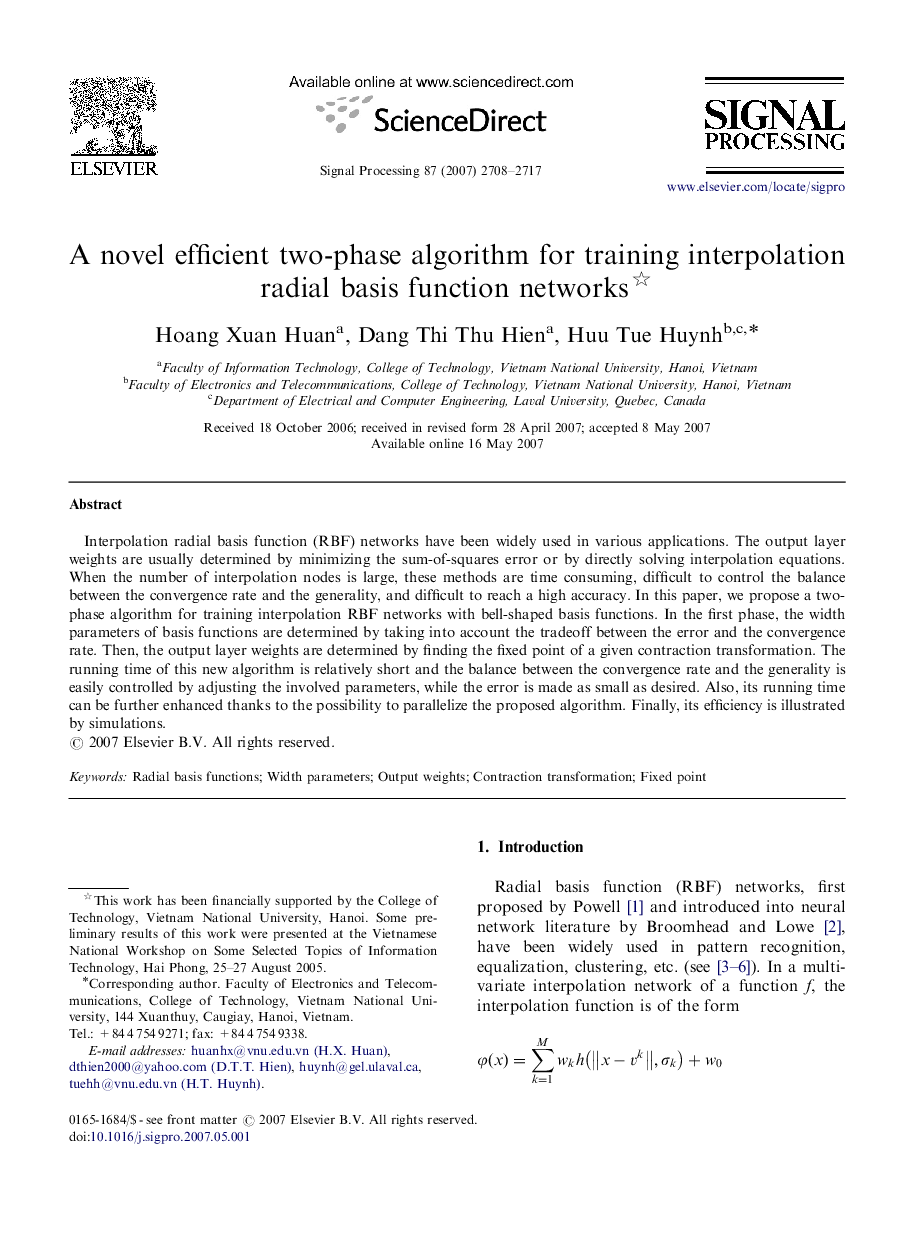| Article ID | Journal | Published Year | Pages | File Type |
|---|---|---|---|---|
| 564821 | Signal Processing | 2007 | 10 Pages |
Interpolation radial basis function (RBF) networks have been widely used in various applications. The output layer weights are usually determined by minimizing the sum-of-squares error or by directly solving interpolation equations. When the number of interpolation nodes is large, these methods are time consuming, difficult to control the balance between the convergence rate and the generality, and difficult to reach a high accuracy. In this paper, we propose a two-phase algorithm for training interpolation RBF networks with bell-shaped basis functions. In the first phase, the width parameters of basis functions are determined by taking into account the tradeoff between the error and the convergence rate. Then, the output layer weights are determined by finding the fixed point of a given contraction transformation. The running time of this new algorithm is relatively short and the balance between the convergence rate and the generality is easily controlled by adjusting the involved parameters, while the error is made as small as desired. Also, its running time can be further enhanced thanks to the possibility to parallelize the proposed algorithm. Finally, its efficiency is illustrated by simulations.
